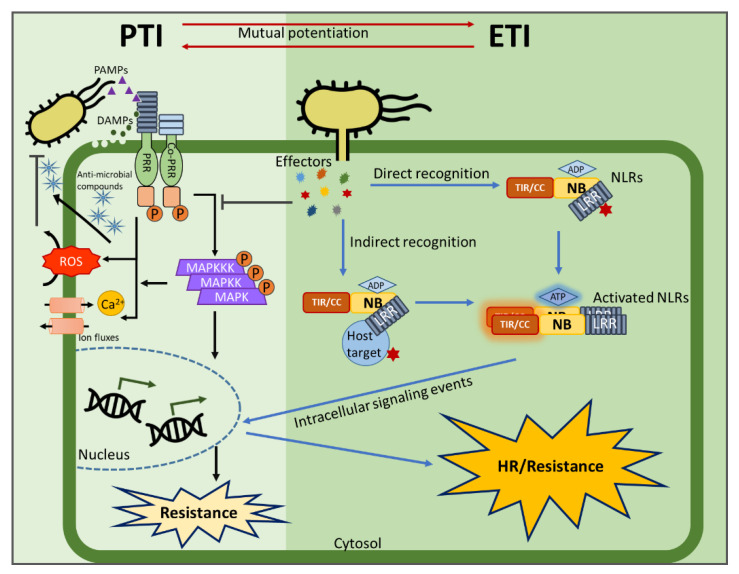Figure 1.
Schematic view of pattern-triggered immunity (PTI) and effector-triggered immunity (ETI) in plants. The first layer of induced immunity, called PTI (indicated by black arrows), is activated by the recognition of pathogen-associated molecular patterns (PAMPs) or damage-associated molecular patterns (DAMPs) through pattern recognition receptors (PRRs). Several PTI signaling events occur, such as activation of the mitogen-activated protein kinases (MAPK) kinase cascades, an influx of Ca2+ into the cytosol, and production of reactive oxygen species (ROS). Antimicrobial compounds are produced and the defense genes are activated. However, to suppress PTI, the pathogens deploy effectors. When they are recognized by nucleotide-binding (NB) and leucine-rich-repeat (LRR)-containing receptors (NLRs), the second immune layer, called ETI (indicated by blue arrows), takes place. NLRs directly or indirectly perceive pathogenic effectors, leading to a conformational change, which together with several intracellular signaling events, ultimately trigger the hypersensitive response (HR) or other defense responses. Surprisingly, the most recent studies reported that PTI and ETI are mutually linked and together potentiate the immune response (indicated by red arrows).

